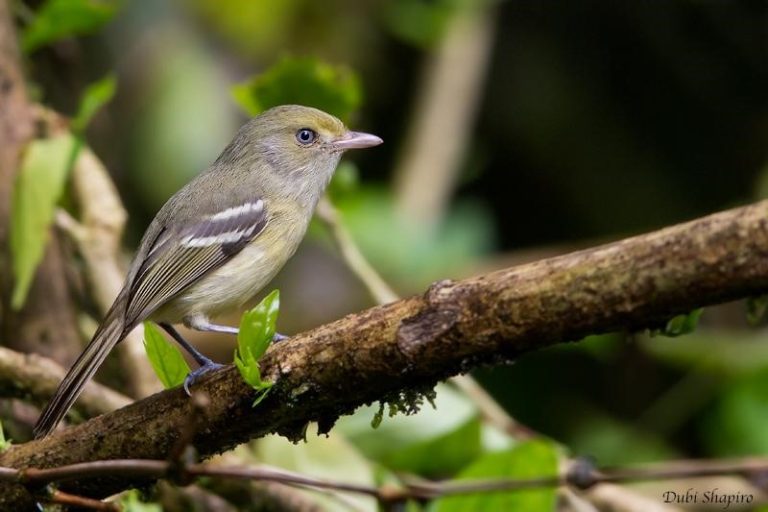
Typical call. © Richard C. Hoyer
Alternate call. © George Wagner
Alternate call. © Richard C. Hoyer
Trill. © Ross Gallardy
Birdfinding.info ⇒ One of Jamaica’s most ubiquitous birds, it can be found at all of the frequently visited sites. Not always easy to lay eyes on, but should at least be heard on nearly every visit to places such as Rocklands Bird Sanctuary, Stewart Town, Marshall’s Pen, Hardwar Gap, San San, Ecclesdown Road, etc.
Jamaican Vireo
Vireo modestus
Endemic to Jamaica, where it is widespread and common in woodlands and scrub at all elevations. Found in both arid and wet habitats at all elevations.
Identification
A plain, gray-and-olive vireo with bold white wingbars, pearly-white irises, and a pinkish bill. Immatures may have dark eyes.
Usually the only wing-barred vireo in its range, but others may occur as rare visitors during migration and winter. White-eyed Vireo is the most similar to Jamaican, including the eye color, but White-eyed has bold yellow spectacles, a dark gray bill, and whitish underparts with contrasting yellow flanks.
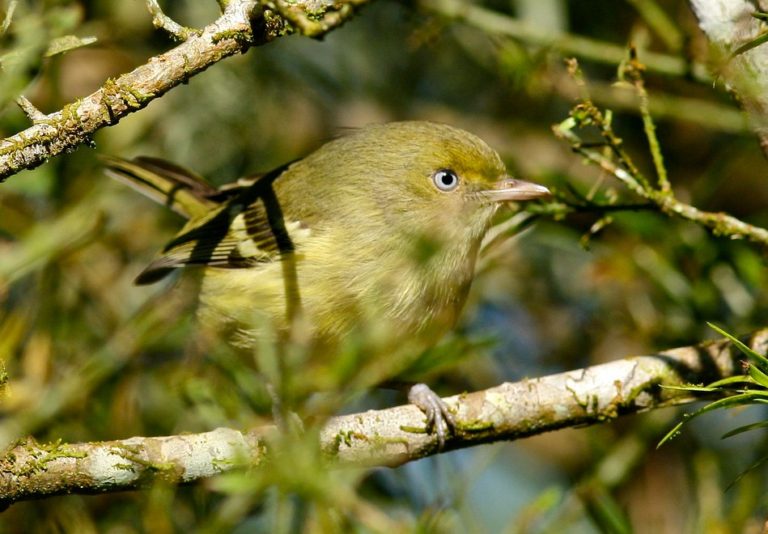
Jamaican Vireo. (Hardwar Gap, Jamaica; March 18, 2009.) © Paul B. Jones
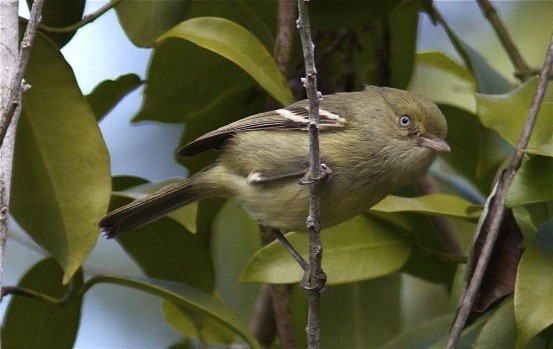
Jamaican Vireo. (Marshall’s Pen, Jamaica; March 10, 2012.) © Ken Havard
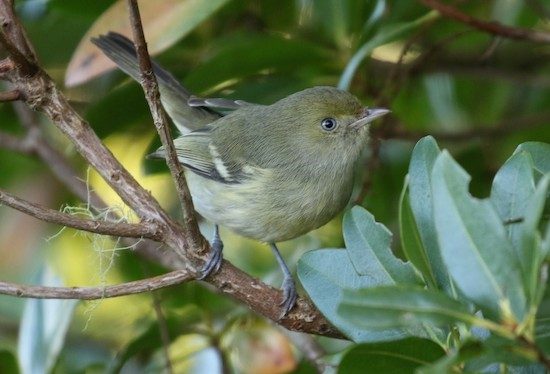
Jamaican Vireo. (Hardwar Gap, Jamaica; January 28, 2019.) © Michael Woodruff
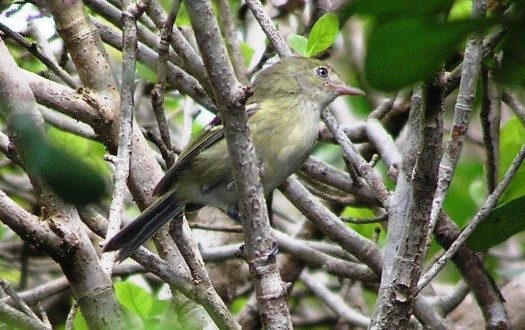
Jamaican Vireo. (Discovery Bay, Jamaica; August 7, 2006.) © Jan van den Broeck
Similar species occur on several other Caribbean islands but are sedentary and unlikely to wander to Jamaica. Flat-billed Vireo of Hispaniola also has pale eyes and white wingbars, but has more yellow on the underparts, especially on the throat and breast, and a short yellow eyebrow.
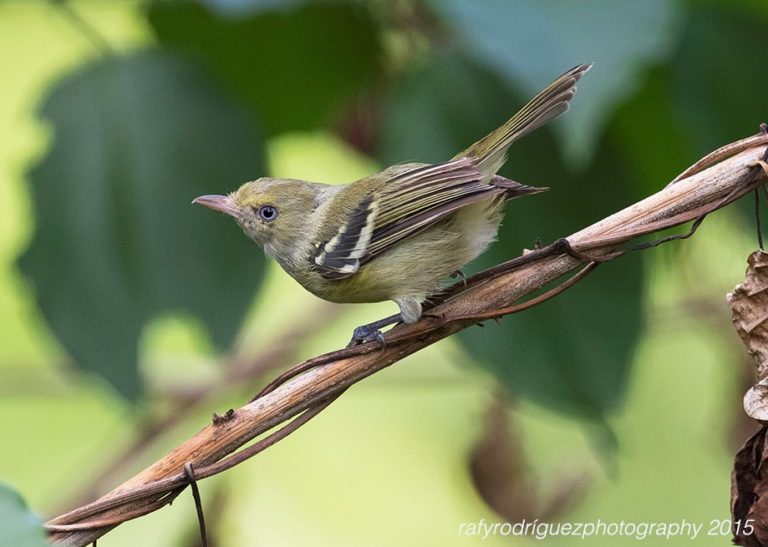
Jamaican Vireo. (Stony Hill, Jamaica; July 27, 2015.) © Rafy Rodríguez

Jamaican Vireo. (Rocklands Bird Sanctuary, Jamaica; February 8, 2017.) © Barry Wright
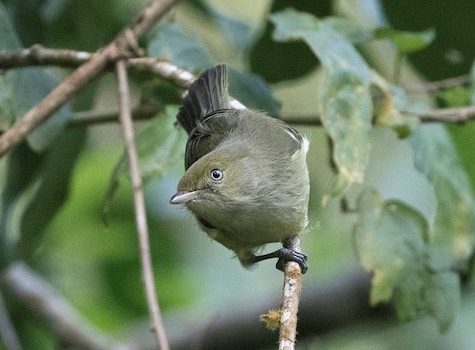
Jamaican Vireo. (Silver Hill Gap, Jamaica; January 10, 2018.) © Charles Hesse TROPICAL BIRDING
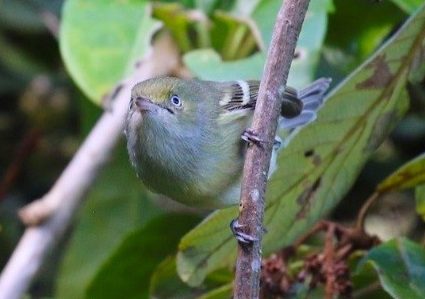
Jamaican Vireo. (Ecclesdown Road, Jamaica; February 11, 2015.) © Knut Hansen
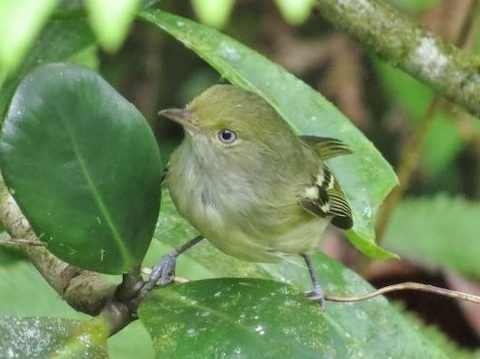
Jamaican Vireo. (Stewart Town, Jamaica; March 27, 2017.) © Michael David
Voice. Has numerous vocalizations, many of which vary in pitch and clarity but have consistent phrasing. One common pattern is a reverberating trill: Another common call is its local name, seWI-seWI:Yet another is two loud notes followed by a trill: Also gives an even series of five or six loud, rapid notes:
Notes
Monotypic species.
References
Brewer, D. 2017. Jamaican Vireo (Vireo modestus). In Handbook of the Birds of the World Alive (J. del Hoyo, A. Elliott, J. Sargatal, D.A. Christie and E. de Juana, eds.). Lynx Edicions, Barcelona. https://www.hbw.com/node/61246. (Accessed November 12, 2018.)
eBird. 2018. eBird: An online database of bird distribution and abundance. Cornell Lab of Ornithology, Ithaca, N.Y. http://www.ebird.org. (Accessed November 12, 2018.)
Haynes-Sutton, A., A. Downer, R. Sutton, and Y.-J. Rey-Millet. 2009. A Photographic Guide to the Birds of Jamaica. Princeton University Press, Princeton, N.J.
Murray, D.S., and D.L. Slager. 2015. Jamaican Vireo (Vireo modestus), version 1.0. In Neotropical Birds Online (T.S. Schulenberg, ed.). Cornell Lab of Ornithology, Ithaca, New York. https://doi.org/10.2173/nb.jamvir1.01.
Raffaele, H., J. Wiley, O. Garrido, A. Keith, and J. Raffaele. 1998. A Guide to the Birds of the West Indies. Princeton University Press, Princeton, N.J.